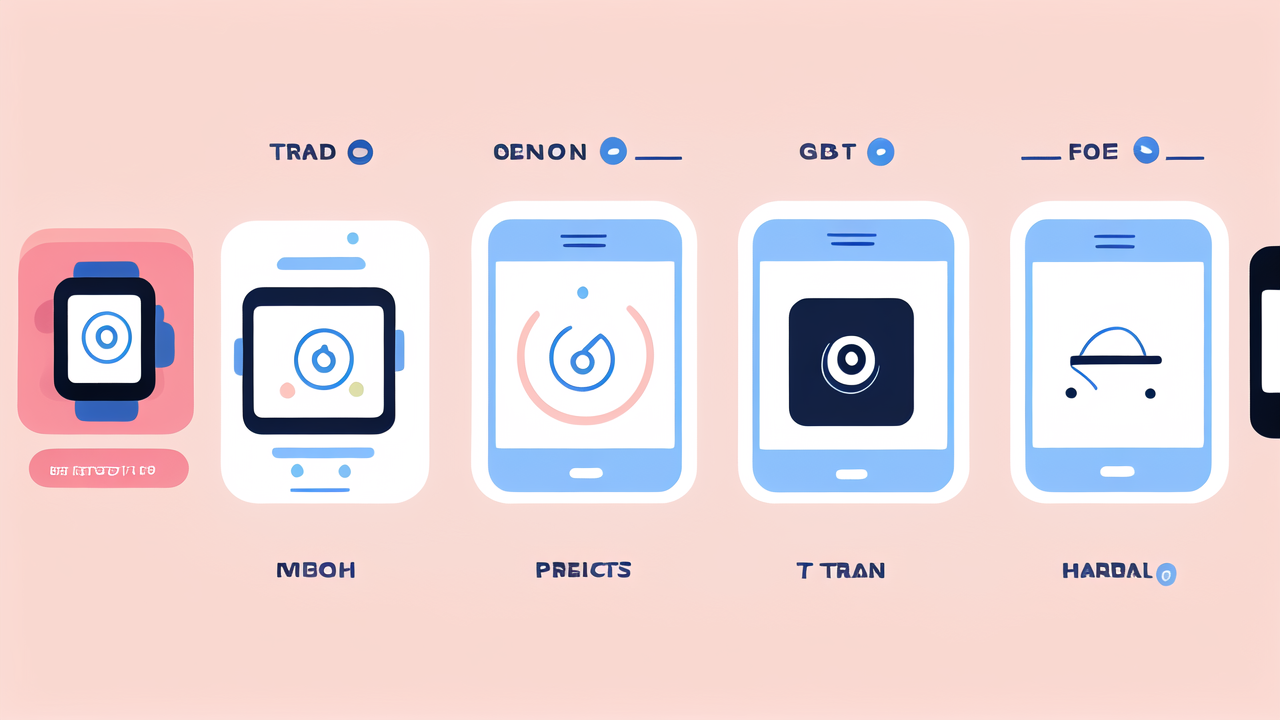Emergence of Modern Fitness Tracking Devices
History of Wearable Fitness Technology
The journey of wearable fitness tech began with simple pedometers. These devices counted steps and gained popularity in the 1960s. Early models were basic, using mechanical sensors to track movement.

As technology advanced, digital pedometers emerged in the 1980s. They offered more accuracy and features. The late 1990s saw the introduction of heart rate monitors. These devices gave users more detailed health data.
The true revolution came in the early 2000s with the first GPS-enabled fitness trackers. These devices could track distance, pace, and routes. This marked the birth of modern fitness tracking as we know it today.
Technological Advancements Shaping Today's Fitness Trackers
Modern fitness trackers have come a long way from their humble beginnings. They now incorporate a wide range of sensors and technologies. These include accelerometers, gyroscopes, and optical heart rate monitors.
Many trackers now feature built-in GPS, eliminating the need for a smartphone during workouts. Advanced sensors can measure blood oxygen levels and skin temperature. Some even offer ECG functionality for heart health monitoring.
Battery life has greatly improved, with some devices lasting weeks on a single charge. Water resistance is now standard, allowing for swim tracking. The integration of NFC technology enables contactless payments directly from the wrist.
The Integration of AI and Machine Learning in Fitness Gadgets
Artificial Intelligence (AI) and Machine Learning (ML) have revolutionized fitness tracking. These technologies analyze vast amounts of user data to provide personalized insights and recommendations.
AI algorithms can detect patterns in sleep, activity, and heart rate data. This allows for more accurate health assessments and predictions. ML models can learn from user behavior to offer tailored workout suggestions and goals.
Some trackers now use AI to automatically detect different types of exercises. This eliminates the need for manual input. AI-powered virtual coaches provide real-time feedback and motivation during workouts.
Impact of Fitness Trackers on the Health and Wellness Industry
Changing Consumer Behavior and Fitness Regimens
Fitness trackers have significantly altered how people approach their health and fitness. Users now have access to real-time data about their activity levels, sleep patterns, and more.

This constant stream of information has made many more aware of their daily habits. It has encouraged people to be more active and mindful of their health choices. Many users set daily step goals or calorie burn targets, motivated by their devices.
Fitness trackers have also changed how people exercise. Many now rely on their devices for workout guidance and tracking. This has led to a rise in app-based fitness programs and virtual coaching services.
Role of Fitness Trackers in Preventive Healthcare
Fitness trackers are playing an increasing role in preventive healthcare. These devices can help detect early signs of health issues before they become serious.
Many trackers now monitor heart rate variability, which can indicate stress levels. Some can detect irregular heart rhythms, potentially alerting users to conditions like atrial fibrillation.
Sleep tracking features can help identify sleep disorders or poor sleep habits. This information can be valuable for improving overall health and preventing related issues.
Partnerships Between Tech Companies and Healthcare Providers
The rise of fitness trackers has led to collaborations between tech firms and healthcare providers. Many hospitals and insurance companies now offer incentives for using fitness trackers.
Some insurance providers offer lower premiums to customers who meet certain activity goals. Hospitals are using data from these devices to monitor patients remotely. This can lead to earlier interventions and better health outcomes.
Tech companies are partnering with research institutions to study the long-term health impacts. These studies use data from millions of users to gain new insights into public health trends.
The Future of Fitness Tracking: Trends and Predictions
Wearable Fitness Tech in the Workplace
Workplace wellness programs are increasingly incorporating wearable fitness tech. Many companies now offer fitness trackers to employees as part of health initiatives.

These devices can help promote a more active work environment. They can encourage employees to take regular breaks and move more throughout the day. Some companies use tracker data to offer rewards or incentives for healthy behaviors.
In the future, we may see more integration of fitness tracking with workplace systems. This could include adjusting workstations based on activity levels or stress indicators.
The Rise of Integrated Fitness Systems
The future of fitness tracking lies in more integrated and comprehensive systems. We're moving beyond single devices to ecosystems of connected fitness products.
Smart clothing with built-in sensors is becoming more advanced and practical. These garments can provide more accurate and detailed data than wrist-worn devices. They can measure muscle activity, posture, and even hydration levels.
Home fitness equipment is increasingly connected to tracking systems. This allows for seamless data sync between workouts and daily activity tracking. Virtual reality and augmented reality are also being integrated for immersive fitness experiences.
Ethical Considerations and Privacy in Fitness Tracking
As fitness tracking technology advances, ethical and privacy concerns are coming to the forefront. The collection and use of personal health data raise important questions about data security and privacy.
There are concerns about how companies may use or share this sensitive information. Some worry about potential discrimination based on fitness data in areas like insurance or employment.
The future will likely see more robust regulations around fitness tracking data. Users may demand more control over their data and how it's used. Balancing the benefits of data-driven health insights with privacy protection will be crucial.
As wearable fitness tech continues to evolve, it promises to revolutionize personal health management. From simple step counters to AI-powered health assistants, these devices are shaping the future of wellness.




Leave a comment
This site is protected by hCaptcha and the hCaptcha Privacy Policy and Terms of Service apply.